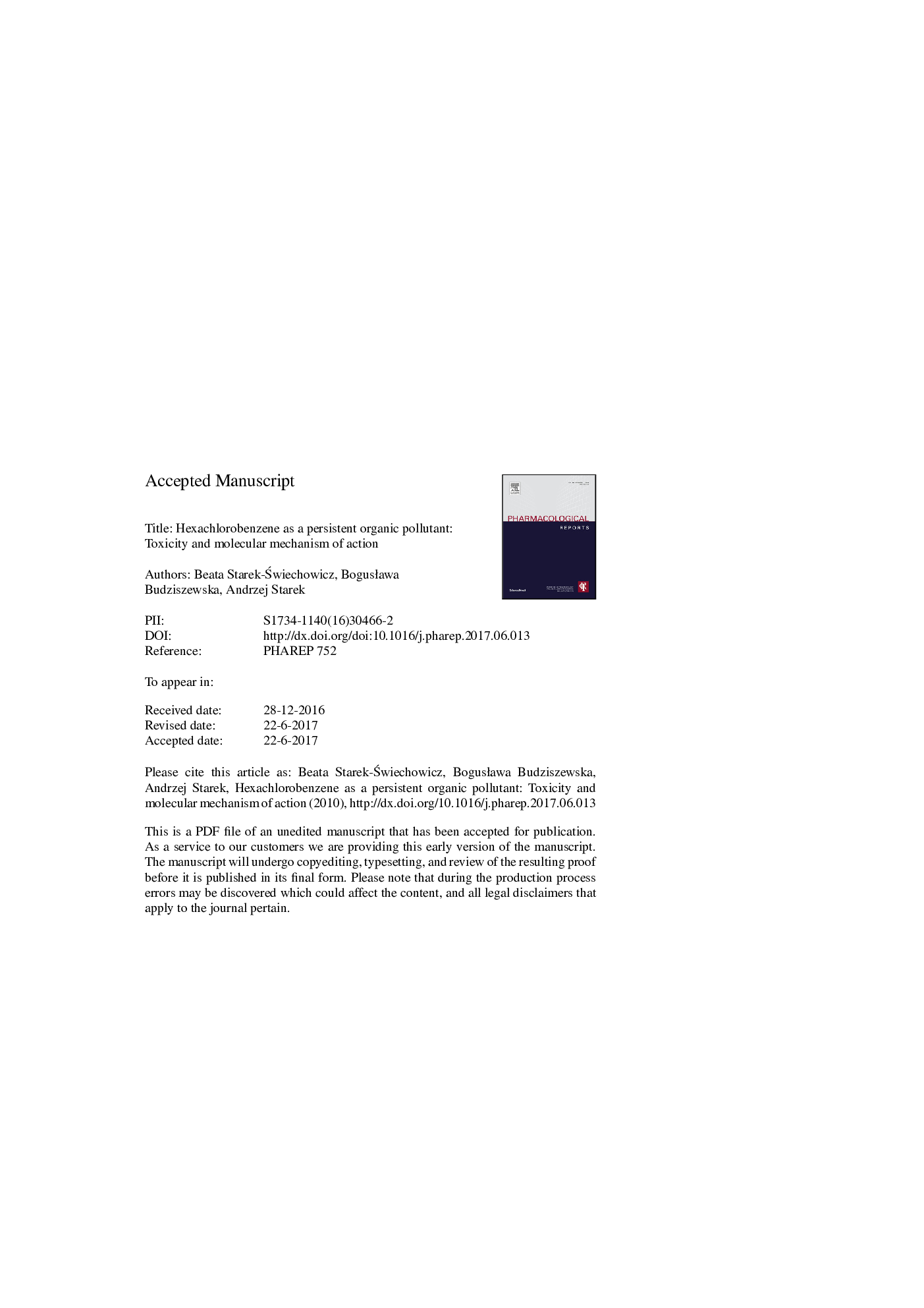| Article ID | Journal | Published Year | Pages | File Type |
|---|---|---|---|---|
| 8349788 | Pharmacological Reports | 2017 | 25 Pages |
Abstract
Hexachlorobenzene (HCB) is an organochlorine pesticide widely distributed in the environment. Chronic exposure of humans to HCB leads to a number of effects, such as triggering of porphyria, microsomal enzyme induction, thyroid dysfunctions, neurological symptoms, and immunological disorders. In animals, HCB induced hepatic porphyria, neurotoxic effects, and toxic effects on the thyroid function, reproductive system, and immune system. HCB as a dioxin-like compound and a weak ligand of the aryl hydrocarbon receptor (AhR) is a hormonal disruptor. HCB is also known to cause tumors of the liver, thyroid and mammary gland in laboratory animals. This review presents HCB toxicity in humans and laboratory animals. The main attention was focused on the mechanisms of HCB toxicity, especially at the molecular level.
Related Topics
Life Sciences
Biochemistry, Genetics and Molecular Biology
Biochemistry
Authors
Beata Starek-Åwiechowicz, BogusÅawa Budziszewska, Andrzej Starek,
